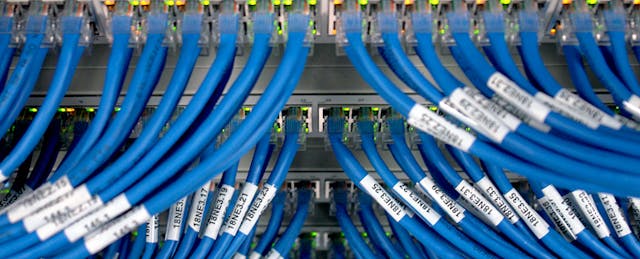How long can students stare at a frozen screen before their minds wander off? How long can they wait for a webpage to load during testing before losing patience and focus?
These were some of the critical issues facing the 800-plus technology staff, educators and administrators who attended CETPA 2013 in Pasadena, CA. Many were searching for ways to stay ahead of the increasing demand for bandwidth as classrooms rely more and more on digital media.
A gathering storm that started with hardware dependence has quickly developed into Internet and wireless dependence. The performance of any application running on any device ultimately will be determined by the Internet bandwidth available to each device.
How Much Bandwidth Should Schools Provide?
Peter Skibitzki, Director of Administrative Operations for the Placer County Office of Education, was not being flippant when he answered: “Whatever they can afford.” For the Common Core tests starting in 2014-15, the Smarter Balanced Assessment Consortium (SBAC) is recommending approximately 10 to 20 Kbps per student for simultaneous testing. But anticipating the usage required to prepare students to achieve the learning goals set in the Common Core standards--not just for testing purposes--the State Educational Technology Directors Association (SETDA) has predicted that schools will need 5 to 10 times the bandwidth recommended by SBAC within the next school year. By 2017-2018, SETDA has established a goal of 1 Mbps per student--up to 100 times the SBAC recommendation.
First Deal with Online Testing
Judging by the packed attendance at the sessions pertaining to Common Core testing, it was clear that getting ready for online testing was foremost on the minds of many IT managers. Given that schools can test students over a 12-week window--meaning not everyone will have to take the test at the same time--the SBAC recommendation did not appear to be particularly challenging for most schools.
In fact, despite the growing prevalence of 1:1 and BYOD, Sean Harrington, Senior Systems Designer at Infinity Communications and Consulting, advised that “cabled labs are the best solution” for SBAC because “they are easiest to troubleshoot.” Long Beach Unified School District’s Executive Director of Technology and Information Services, Matt Woods, is going down that route, at least until the wireless capacity in his district of 83,000 students is fully built out.
But is the SBAC Minimum Really Enough, Even for Testing?
Jeremy Davis, Director of Educational Technology at Capistrano Unified School District, reminded his audience about the inequities inherent in a 12-week testing window: “Will you disadvantage students who have to take the test earlier because you don’t have enough devices?” He suggested it will be unfair to students and unacceptable to educators to limit the number of devices available for testing just to defer the cost of providing more bandwidth to another budget year.
He advocated that districts find the funding to implement 1:1 programs for testing and instruction sooner rather than later. Davis pointed out that technology use is explicitly written into many of the Common Core standards: “Technology is the ingredient and not just the tool...Kids won’t do well if they are not using the technology constantly,” he added.
Going Wireless is NOT the Way Out of a Bad Network Situation
Most schools are looking to wireless mobile devices to expand their use of technology to personalize learning. However, unlike cellular technology for mobile phones, current Wi-Fi technology actually relies on cabling for the entire path the data travels from the Internet “cloud,” except for the last few feet from the wireless access point on the wall to the device in the room. While the latest wireless technology (802.11ac – wave 2) promises capacities approaching the SETDA goal of 1Mbps for every student in a classroom, the wireless access point can be prevented from delivering its maximum capacity by antiquated cabling and switches (the “data backbone”) inside the building. Chronic underfunding has left the capacity of this data backbone in many schools, sometimes referred to as the “middle mile,” the choke point for Internet access.
Lay the foundations for wireless and increase bandwidth with demand
This was the underlying message heard throughout CETPA 2013. Even if schools are able to test all their students using their existing labs, technology staff must be prepared to satisfy a relentless demand for more wireless and upgrade the data backbone now. Central Unified School District, which comprises 21 campuses in Fresno, CA, is not implementing a 1:1 program until August 2014 but started upgrading the data backbone needed to accommodate the higher density of wireless access points more than a year ago.
There seemed to be no consensus on bandwidth. Tim Goree, the Director of Technology Support Services at the Fairfield-Suisun Unified School District in Fairfield, CA, is planning to deliver 1 Mbps per student, the SETDA goal, within four years. Others were less sure about their timeframe to meet this goal but agreed they must build the foundations so that wireless access points and bandwidth can be added as needed. Quipped Burt Lo, the Instructional Technology Coordinator at Galt Joint Union Elementary School District: “You can never have too many chocolate chips or too many wireless access points.”


